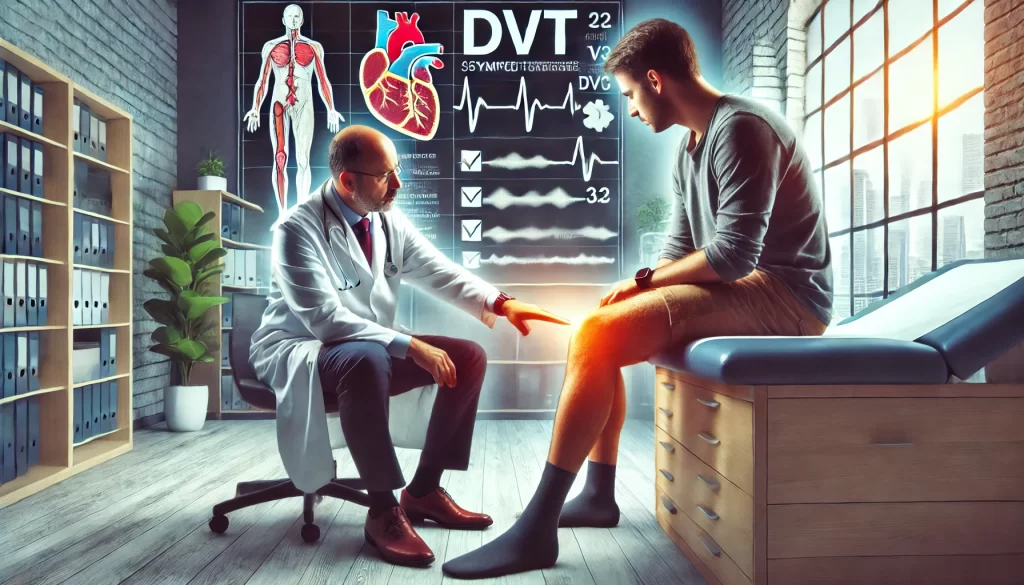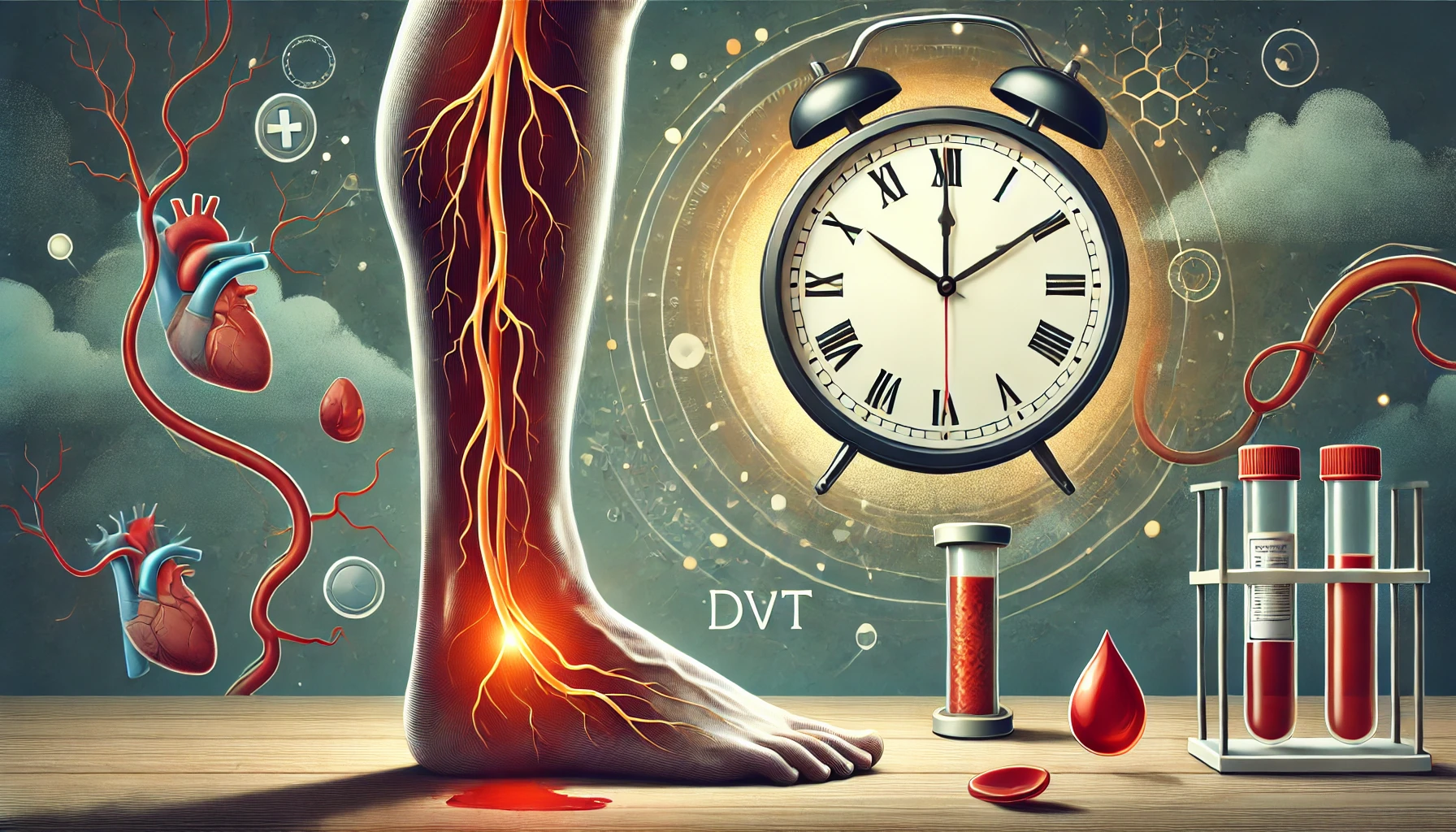Table of Contents
DVT, or deep vein thrombosis, is a dangerous illness that can surprise you. However, how long may DVT go undiagnosed? The scary truth is that DVT often lurks in your body silently, making it hard to detect until it becomes a severe threat. In this article, we’ll explore the risks, symptoms, and potential dangers of undiagnosed DVT, guiding you through what you need to know to protect yourself.
Why Should You Be Aware About DVT?

Usually affecting the legs, deep vein thrombosis, or DVT, is the result of a blood clot forming in a deep vein. This clot may stop blood flow entirely or partially, resulting in pain, edema, or other severe side effects. But the real danger lies in the fact that DVT can exist without noticeable symptoms, leading many to ask, “How long can you have DVT without knowing?” It is important to comprehend DVT because, if untreated, it can result in potentially fatal problems.
The Silent Threat: Can DVT Go Unnoticed?
How DVT Develops Silently
One of the most frightening aspects of DVT is how it can develop without any warning signs. Many people with DVT experience little to no symptoms, making it easy for the condition to go unnoticed for weeks, months, or even longer. The clot may slowly build up over time, quietly obstructing blood flow until it reaches a critical point.
Factors That Increase Your Risk
Certain factors can increase the likelihood of developing DVT without realizing it. These include prolonged periods of inactivity, such as long flights or sitting at a desk all day, certain medications, and even genetic predispositions. If you fall into any of these categories, it’s essential to be vigilant, as the chances of having DVT without knowing are significantly higher.
Common Symptoms: What to Watch For

Early Warning Signs
While DVT can be sneaky, some early symptoms might tip you off to its presence. These include swelling in one leg, unexplained pain or tenderness, and heaviness in the affected limb. However, these signs are often mild and easy to dismiss, which is why many wonder, “How long can you have DVT without knowing?” Actually, these early signs and symptoms might be so mild that people choose to ignore them.
When Symptoms Escalate
As DVT progresses, symptoms may become more pronounced. The affected leg might swell significantly, change color, or feel warm. Pain can become more intense, especially when walking or standing. It is imperative that you get medical help as soon as you detect these symptoms because DVT can have serious consequences if left untreated.
The Dangers of Ignoring DVT
Pulmonary Embolism: A Life-Threatening Complication
The possibility of a pulmonary embolism (PE) is among the most terrifying consequences of undetected DVT. This happens when a fragment of the clot breaks off and enters the lungs, obstructing blood circulation. A medical emergency known as PE can result in breathing difficulties, chest pain, or even unexpected death. This is why it’s vital to recognize DVT early, but the big question remains: how long can you have DVT without knowing before it leads to something as dangerous as PE?
Long-Term Health Issues
Even if DVT doesn’t lead to a pulmonary embolism, it can still cause long-term health problems. Chronic pain, swelling, and skin ulcers can result from untreated DVT, significantly impacting your quality of life. By being aware of the signs and taking prompt action, these difficulties can be avoided.
How to Protect Yourself from Undiagnosed DVT
Regular Check-Ups and Awareness
The best way to protect yourself from the dangers of undiagnosed DVT is through regular medical check-ups and staying informed about the risks. If you have risk factors like a sedentary lifestyle, obesity, or a family history of blood clots, talk to your doctor about screening for DVT. Proactive measures can have a major impact on detecting DVT before it becomes a potentially fatal condition.
Lifestyle Changes to Reduce Risk
Simple lifestyle changes can significantly reduce your risk of developing DVT without knowing it. Your blood can stay flowing normally with regular exercise, proper hydration, and taking breaks to walk about during extended periods of sitting. These small steps can prevent clots from forming and keep you healthy.
Also Read: Can You Become a CNA Online? Discover the Astonishing Truth
When to See a Doctor
Don’t Ignore the Signs
See a doctor right away if you have any symptoms that might point to DVT. It is better to be safe than sorry, even if the symptoms are minor or go away on their own. Early detection is critical to preventing serious complications, and your doctor can help you determine the best course of action.
Testing and Diagnosis
Doctors have several methods for diagnosing DVT, including ultrasounds, blood tests, and sometimes more advanced imaging techniques. If you’re concerned about how long you can have DVT without knowing, these tests can provide peace of mind and ensure that any potential issues are caught early.
How long, then, can you have DVT without realizing it? The answer is that it varies from person to person, but the risks of not knowing are too significant to ignore. DVT can quietly threaten your health, but you can protect yourself from this silent danger by staying aware, watching for symptoms, and making healthy lifestyle choices. Don’t let DVT catch you off guard—take charge of your health today and ensure you’re doing everything you can to stay safe.




